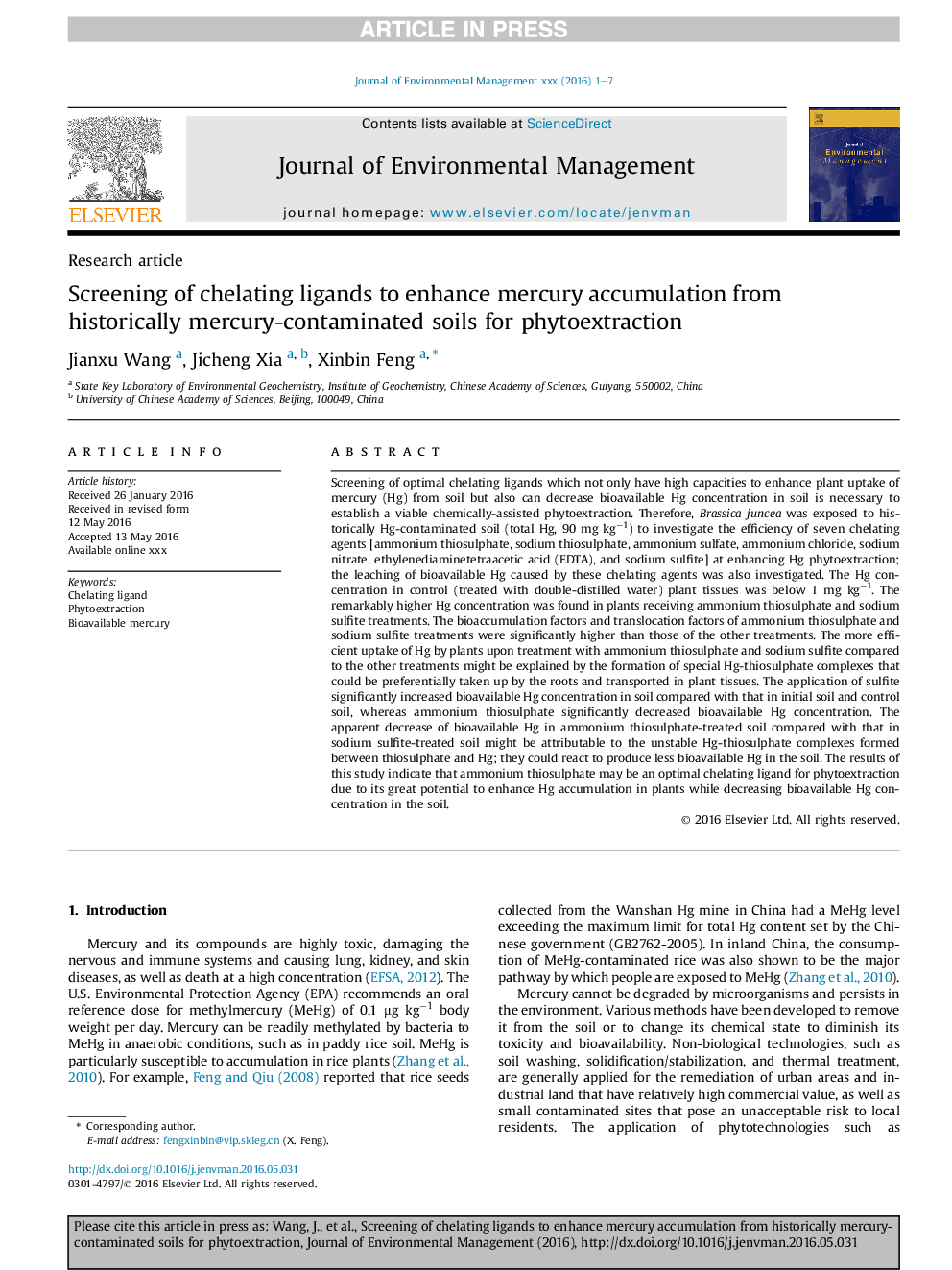| کد مقاله | کد نشریه | سال انتشار | مقاله انگلیسی | نسخه تمام متن |
|---|---|---|---|---|
| 5117423 | 1378125 | 2017 | 7 صفحه PDF | دانلود رایگان |
عنوان انگلیسی مقاله ISI
Screening of chelating ligands to enhance mercury accumulation from historically mercury-contaminated soils for phytoextraction
ترجمه فارسی عنوان
غربالگری لیگاند های شیمیایی برای افزایش تجمع جیوه از خاک های آلوده شده جیوه به صورت فیتوکساکساسیون
دانلود مقاله + سفارش ترجمه
دانلود مقاله ISI انگلیسی
رایگان برای ایرانیان
موضوعات مرتبط
مهندسی و علوم پایه
مهندسی انرژی
انرژی های تجدید پذیر، توسعه پایدار و محیط زیست
چکیده انگلیسی
Screening of optimal chelating ligands which not only have high capacities to enhance plant uptake of mercury (Hg) from soil but also can decrease bioavailable Hg concentration in soil is necessary to establish a viable chemically-assisted phytoextraction. Therefore, Brassica juncea was exposed to historically Hg-contaminated soil (total Hg, 90 mg kgâ1) to investigate the efficiency of seven chelating agents [ammonium thiosulphate, sodium thiosulphate, ammonium sulfate, ammonium chloride, sodium nitrate, ethylenediaminetetraacetic acid (EDTA), and sodium sulfite] at enhancing Hg phytoextraction; the leaching of bioavailable Hg caused by these chelating agents was also investigated. The Hg concentration in control (treated with double-distilled water) plant tissues was below 1 mg kgâ1. The remarkably higher Hg concentration was found in plants receiving ammonium thiosulphate and sodium sulfite treatments. The bioaccumulation factors and translocation factors of ammonium thiosulphate and sodium sulfite treatments were significantly higher than those of the other treatments. The more efficient uptake of Hg by plants upon treatment with ammonium thiosulphate and sodium sulfite compared to the other treatments might be explained by the formation of special Hg-thiosulphate complexes that could be preferentially taken up by the roots and transported in plant tissues. The application of sulfite significantly increased bioavailable Hg concentration in soil compared with that in initial soil and control soil, whereas ammonium thiosulphate significantly decreased bioavailable Hg concentration. The apparent decrease of bioavailable Hg in ammonium thiosulphate-treated soil compared with that in sodium sulfite-treated soil might be attributable to the unstable Hg-thiosulphate complexes formed between thiosulphate and Hg; they could react to produce less bioavailable Hg in the soil. The results of this study indicate that ammonium thiosulphate may be an optimal chelating ligand for phytoextraction due to its great potential to enhance Hg accumulation in plants while decreasing bioavailable Hg concentration in the soil.
ناشر
Database: Elsevier - ScienceDirect (ساینس دایرکت)
Journal: Journal of Environmental Management - Volume 186, Part 2, 15 January 2017, Pages 233-239
Journal: Journal of Environmental Management - Volume 186, Part 2, 15 January 2017, Pages 233-239
نویسندگان
Jianxu Wang, Jicheng Xia, Xinbin Feng,
